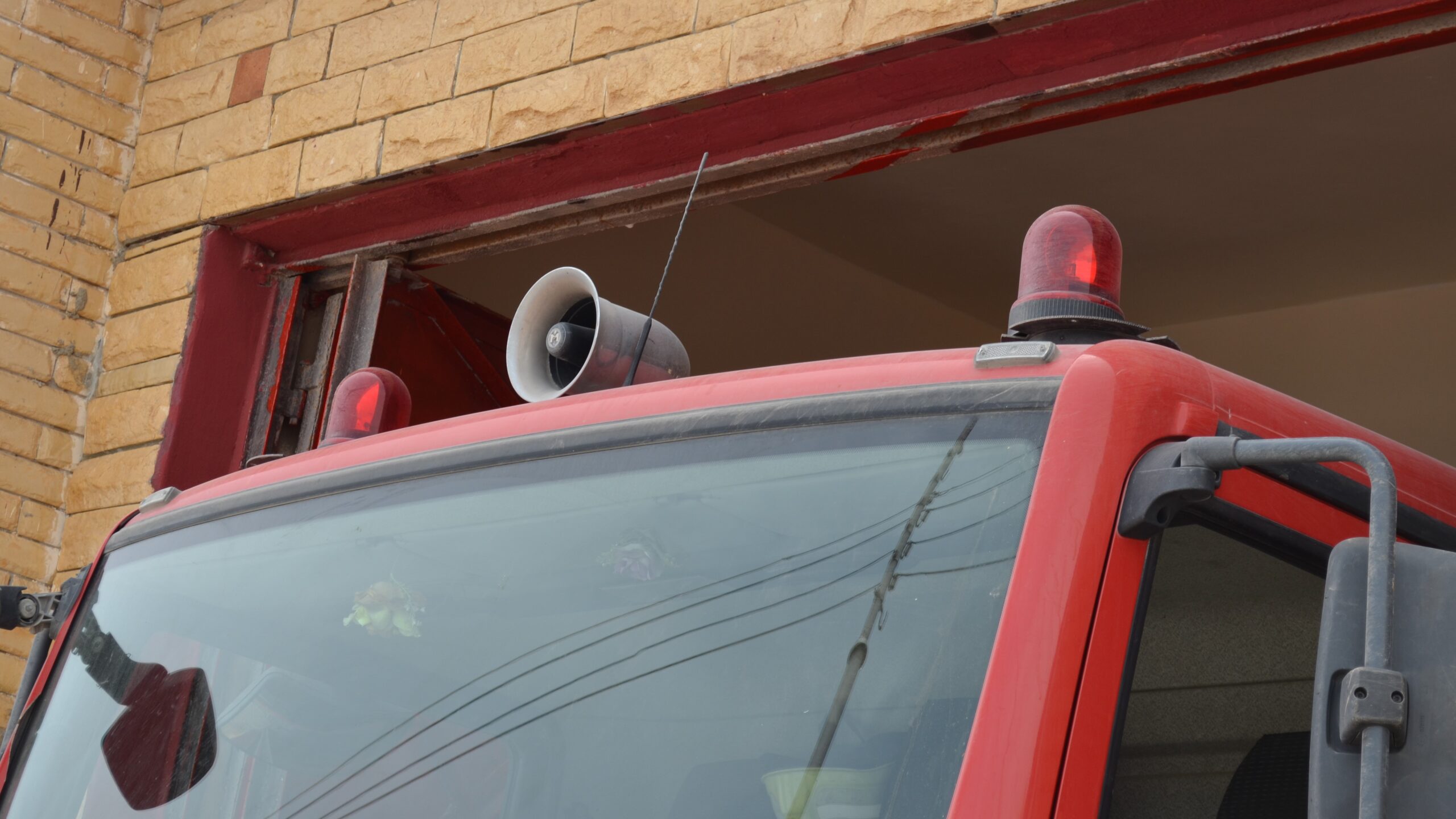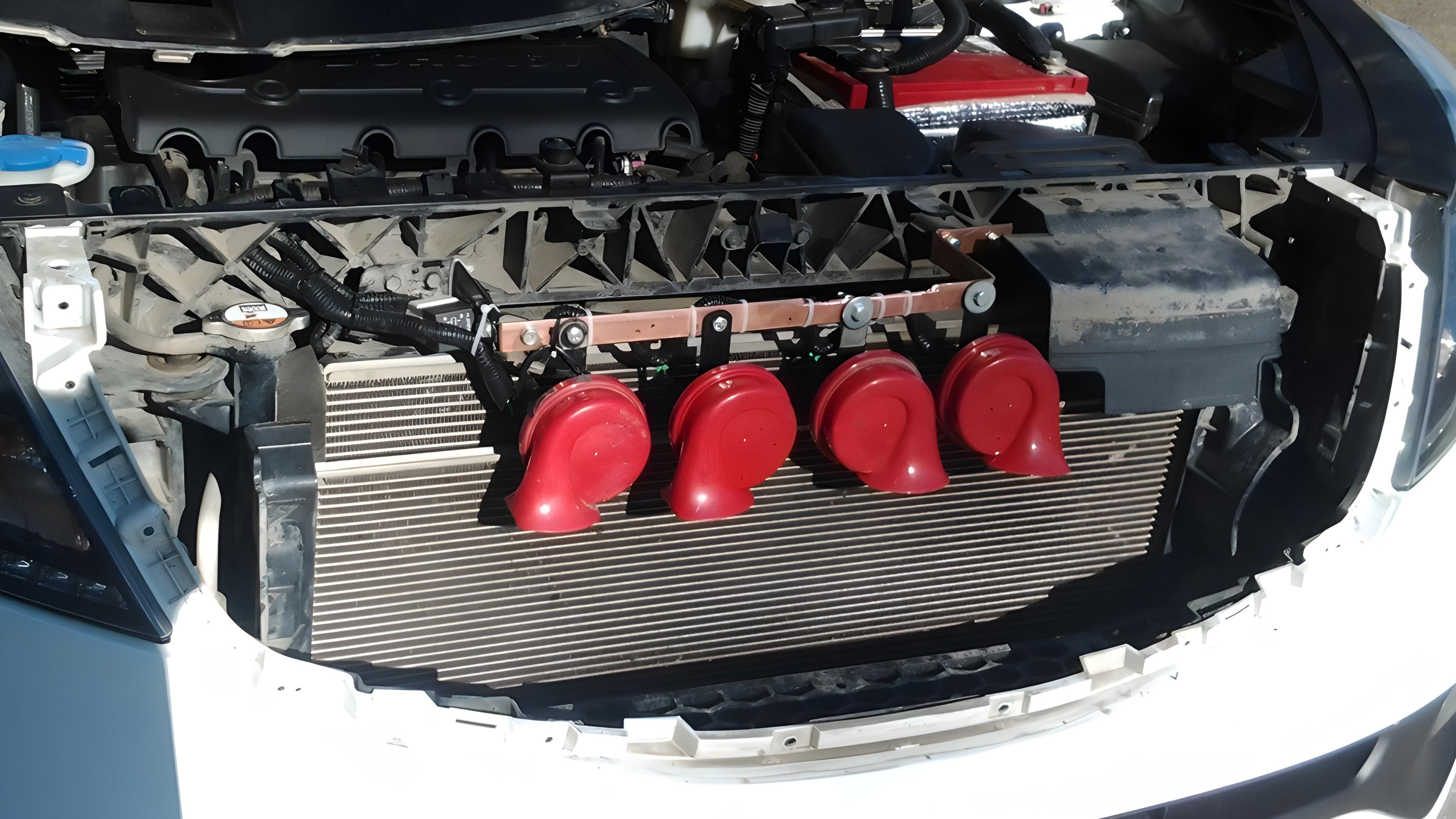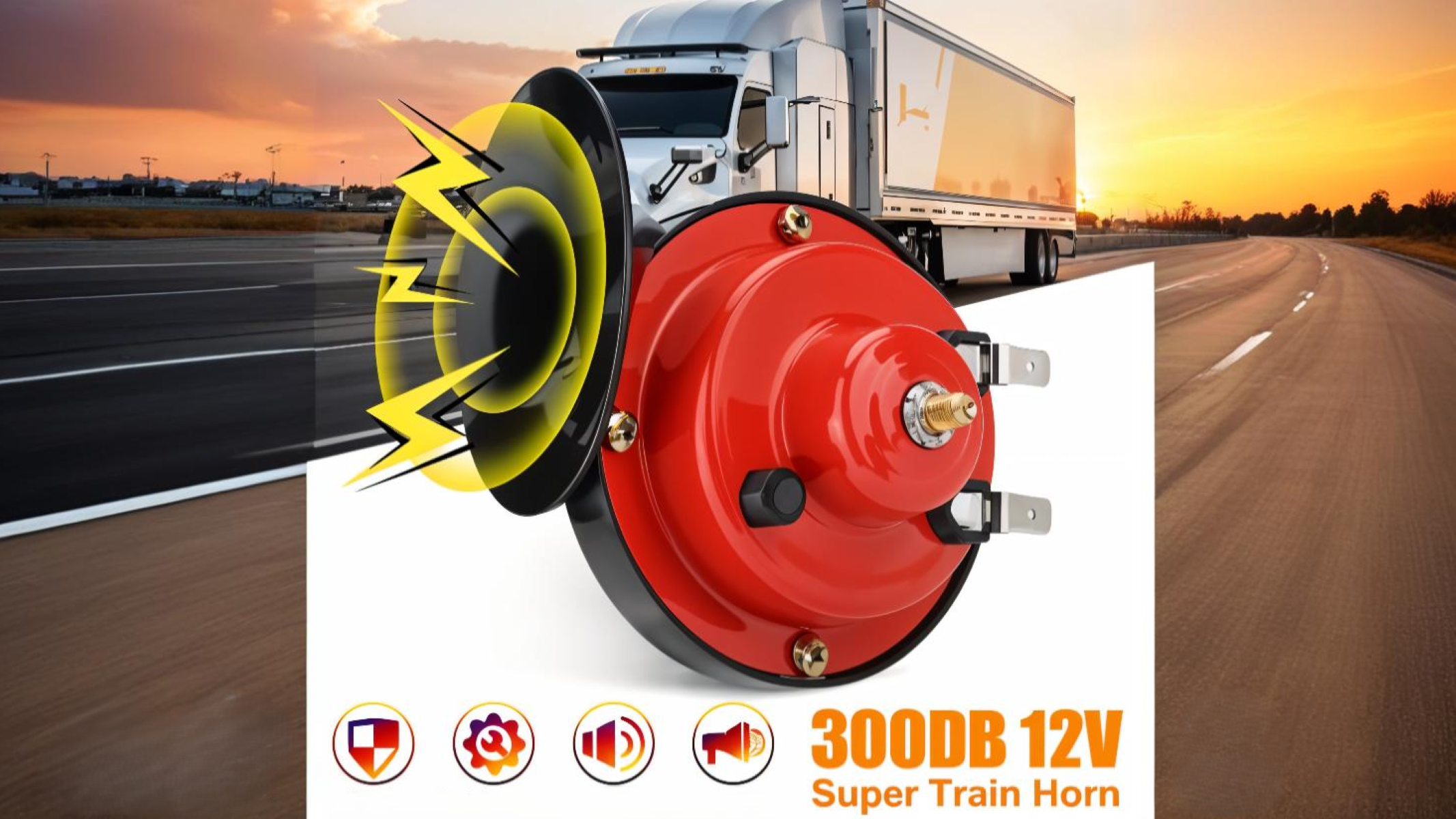When it comes to driving, sound signals are more than just noise – they play a crucial role in keeping roads safe, guiding traffic, and preventing accidents. These signals, whether honking horns, sirens, or other audible cues, are used to communicate important information between drivers, pedestrians, and authorities. But what makes a sound signal truly attention-grabbing? And how can they be used effectively on the road? In this article, we’ll dive deep into the world of attention-grabbing sound signals, exploring their importance, the different types, and how they shape our driving experience.
Why Attention-Grabbing Sound Signals Matter
Sound signals are essential on the road because they serve as immediate alerts in situations that require quick decisions. In a split second, a sharp honk or a wailing siren can shift a driver’s focus and prevent a dangerous collision. These auditory cues aren’t just noise—they’re a form of non-verbal communication that keeps everyone aware of their surroundings. In environments where visibility is limited or distractions are high, sound becomes a powerful ally in maintaining road safety.
One of the key reasons these signals are so effective is because they cut through ambient noise. The roar of engines, background chatter, and music can drown out visual signals, but a sudden sound grabs attention almost instantly. Drivers rely on these signals not just to react, but to make decisions. For example, when a siren is heard from a distance, drivers instinctively begin scanning for where it’s coming from and adjusting their movement to make way—often before the vehicle is even in sight.
There’s also a psychological component at play. Human brains are hardwired to respond more urgently to certain frequencies. High-pitched, sharp sounds activate the brain’s threat response, prompting quicker physical reactions. This is why emergency sirens and alarms are designed to be piercing and difficult to ignore. Our evolutionary instincts kick in, treating these sounds as urgent warnings, which makes them incredibly effective in preventing accidents.
Familiarity further enhances the impact of these signals. We grow up recognizing the specific sounds of police, ambulance, and fire truck sirens. This recognition becomes automatic over time, training our brains to associate these sounds with the need to take action. It’s not just about hearing the sound—it’s about instantly knowing what it means and what to do next. That instinctive understanding makes attention-grabbing sound signals an indispensable part of road safety.
Types of Attention-Grabbing Sound Signals
| Sound Signal Type | Primary Use | Typical Sound Description | Level of Urgency | Common Challenges or Issues |
| Car Horns | Warns drivers of immediate hazards or alerts them of mistakes | Short beep or long honk, depending on the situation | Medium to High | Often misused for venting frustration; can escalate tension |
| Emergency Vehicle Sirens | Alerts others to move aside for ambulances, fire trucks, or police cars | Loud, high-pitched, oscillating siren | Very High | Can cause panic if direction of vehicle is unclear |
| Pedestrian Crosswalk Signals | Helps visually impaired individuals cross safely | Beeping or chirping synchronized with traffic signals | Low to Medium | Sometimes difficult to hear in loud urban environments |
| Car Alarms | Deters theft or alerts to vehicle tampering | Loud repetitive honking or siren-like sound | Medium | Frequently triggered accidentally, leading to annoyance |
| Train Horns and Bells | Warns of approaching train at crossings | Deep, long horn or continuous bell ringing | Very High | Can be missed if vehicle sound insulation is strong |
The Science of Effective Sound Signals
Designing an effective sound signal isn’t just about cranking up the volume. It’s a precise balance of acoustics, psychology, and environmental awareness. The goal? To make sure the signal cuts through all the noise, grabs attention instantly, and delivers a clear message without overwhelming the listener.
- Volume and Frequency Matter: An effective sound signal must hit the sweet spot between being loud enough to rise above ambient traffic noise and soft enough to avoid being disruptive or damaging to hearing. If a signal is too quiet, it fades into the background chaos of engines, honking, and chatter. If it’s too loud, it may cause irritation or anxiety—especially in confined spaces or high-density areas.
- Low-Frequency Sounds: These travel longer distances and are less likely to be absorbed by obstacles like buildings or cars. That makes them especially useful in open areas or highways where space and noise levels are more variable.
- High-Frequency Sounds: These are more noticeable to the human ear and work better in cluttered or urban environments. Think of the shrill beep of a crosswalk or the piercing siren of an ambulance—they grab your attention, fast.
- Clarity and Uniqueness: The effectiveness of a sound signal also relies heavily on how distinctive it is. A good signal shouldn’t blend in—it should stand out instantly. For instance, the siren of an emergency vehicle is designed to be unmistakable. It varies in pitch and pattern so it won’t be confused with other road noises. In contrast, a generic horn may need to be pressed more than once—or used creatively—to cut through the soundscape.
- Psychoacoustic Response: Our brains are wired to pay attention to certain sounds more than others. Sudden changes in pitch, rhythm, or volume naturally activate our fight-or-flight response. This is why effective sound signals often use patterns or modulations that aren’t just loud, but emotionally triggering—prompting immediate action.
- Consistency in Use: Repetition and consistency help train both drivers and pedestrians to recognize and react to specific signals. If a sound is used randomly or inconsistently, it loses its impact. That’s why regulated tones and frequencies are essential in designing public safety signals.
The Role of Sound Signals in Traffic Laws
Sound signals play a critical role in maintaining order on the roads, and their use is often governed by strict traffic laws. These laws ensure that sound signals, whether they be car horns, emergency vehicle sirens, or pedestrian crossing signals, are used appropriately to protect both drivers and pedestrians. Understanding the legal aspects of sound signal use helps prevent confusion and accidents, creating a safer driving environment for everyone.
Car horn usage is one of the most commonly regulated sound signals. Although horns can be effective for alerting other drivers to a potential hazard, their misuse can lead to fines or penalties. In many jurisdictions, honking is only allowed in situations where there is an immediate danger, such as to avoid a collision. Using a car horn out of frustration or in non-emergency situations can not only be distracting but also be considered illegal in some areas. This regulation helps ensure that the horn remains a tool for genuine safety, rather than a source of road rage or unnecessary noise.
Emergency vehicle sirens are another essential sound signal with specific laws surrounding their use. Emergency vehicles such as ambulances, fire trucks, and police cars are granted special privileges, and their sirens act as legal signals that require other vehicles to yield the right of way. Drivers must pull over to the side of the road upon hearing an emergency vehicle’s siren, unless doing so would cause a greater hazard, such as blocking an intersection or impeding traffic flow. The legal requirement to yield ensures that emergency responders can reach their destinations quickly and efficiently, potentially saving lives in urgent situations.
Pedestrian crosswalk signals also have legal implications. In many areas, there are laws that mandate drivers to yield to pedestrians when the crosswalk signal is active. These sound signals are especially important for people with visual impairments, as they alert them to the safety of crossing the street. Failing to obey pedestrian signals, such as blocking the crosswalk or not stopping for pedestrians when the signal is active, can result in legal penalties. These rules emphasize the importance of prioritizing pedestrian safety and maintaining order in urban traffic systems.
How to Make Sound Signals More Effective
| Strategy | Description | Implementation Example | Expected Outcome | Challenges |
| Technological Advances | Leveraging technology to enhance sound signal capabilities. | Emergency vehicle sirens that automatically adjust volume based on ambient traffic noise. | More effective signals that adapt to surroundings and get noticed quicker. | Requires investment in technology and infrastructure. |
| Standardization | Ensuring uniformity of sound signals across regions. | Standardized emergency vehicle sirens worldwide to reduce confusion. | Universal recognition of signals, making them instantly identifiable. | Resistance to change in existing systems. |
| Public Awareness Campaigns | Educating the public about the appropriate use of sound signals. | Public service ads and campaigns teaching proper car horn etiquette, pedestrian signal use, etc. | Reduced misuse of sound signals and better overall understanding of traffic laws. | Ensuring wide reach and engagement with the public. |
| Use of Distinctive Tones | Designing sound signals that are more unique and attention-grabbing. | Developing car horns or pedestrian signals with distinct tones that are easily distinguishable. | Faster recognition of the signal and quicker response from drivers and pedestrians. | Balancing uniqueness with general acceptability. |
| Testing and Feedback | Continuously testing sound signals and gathering feedback from road users. | Conducting studies and surveys to assess how well different sound signals are noticed and understood. | Improved sound signal design based on real-world feedback, enhancing safety. | Difficulty in collecting accurate, representative feedback. |
The Future of Sound Signals on the Road
- Integration of Artificial Intelligence (AI)
- AI could assess traffic conditions in real-time and adjust sound signals accordingly.
- Sound signals will adapt based on the level of ambient noise, weather conditions, and specific hazards, ensuring optimal clarity and effectiveness.
- Adaptive Sound Signals
- Sound signals may automatically adjust their volume or tone depending on the traffic environment.
- For instance, emergency vehicle sirens could become louder in dense traffic or change frequency to ensure they stand out.
- Combination of Sound and Visual Cues
- Sound signals may be paired with visual signals, such as flashing lights or digital displays, to enhance their visibility and impact.
- This combination would be particularly useful in urban environments where visual distractions are common.
- Sound Signals in Autonomous Vehicles
- Self-driving cars will require advanced sound signals to communicate with pedestrians and other vehicles.
- Autonomous vehicles will use sound signals to alert pedestrians, especially in complex or high-traffic areas.
- Innovative Sound Design for Safety
- Autonomous vehicles will be equipped with unique, optimized sound signals that can be easily identified and understood by both pedestrians and other drivers.
- These sound signals will be designed for both safety and clarity, with an emphasis on non-disruptive communication in urban settings.
- Real-Time Traffic Response Systems
- Future sound signals may be connected to traffic monitoring systems, allowing them to react dynamically to road conditions, accidents, or emergencies.
- This could include modifying signal patterns or prioritizing specific types of sound signals in certain scenarios to improve driver awareness and response time.
- Personalized Sound Signals
- With the rise of connected cars, sound signals may be customized based on individual driver preferences or requirements.
- Vehicles could adjust the type and frequency of alerts depending on the driver’s specific needs, such as hearing impairments or driving style.
Innovations in Sound Signals for Future Road Safety
As urbanization increases and traffic becomes more complex, the role of sound signals on the road is rapidly evolving. With technological advancements, the future of sound signals promises to be more dynamic and responsive, allowing for enhanced safety and communication between vehicles, pedestrians, and cyclists. The integration of artificial intelligence and advanced sensing technology is expected to revolutionize how sound signals function, ensuring that they are not only louder but more adaptive to the surroundings.
One of the significant innovations will be the ability of sound signals to change in real-time based on the specific needs of the environment. For instance, a vehicle’s sound signal could automatically adjust in volume or frequency depending on traffic density, weather conditions, or even nearby construction zones. This could improve the clarity of emergency sirens, car horns, and other important road signals, ensuring they cut through the noise of a bustling city and reach those who need to hear them the most.
Moreover, the future may see the integration of sound signals with other forms of communication, such as visual cues. Flashing lights, digital signage, or even augmented reality displays could work alongside sound signals, providing multiple ways for people to interpret warnings. This would be especially useful in high-traffic areas where visual and auditory signals need to work together to prevent accidents and improve overall road safety.
In addition to improving traditional sound signals, autonomous vehicles are expected to change the game by introducing new ways of signaling and communicating. Self-driving cars may need specialized sound signals designed to alert pedestrians or other vehicles of their presence, as these vehicles will rely on sensors and cameras instead of human drivers to detect their environment. This will require a new wave of innovation in how sound signals are generated and perceived, aiming to bridge the communication gap between autonomous vehicles and human drivers or pedestrians.




